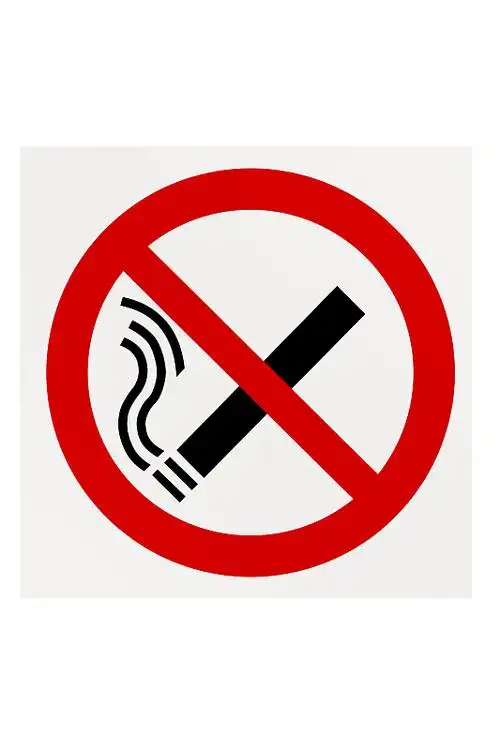The Invisible Opponent: How Secondhand Smoke Undermines Gym Coaches and Their Mission
Walk into any thriving gym, and you’ll feel it—the energy, the rhythm of clanging weights, the encouraging shouts from the sidelines. At the heart of this ecosystem is the gym coach, a paragon of health, dedication, and resilience. They are the architects of transformation, guiding clients through sweat and strain toward better versions of themselves. Yet, there's an invisible opponent lurking, one that doesn't respect the sanctity of the weight room or the purity of a healthy lifestyle: secondhand smoke. While we often discuss the dangers of smoking for the individual, the profound and specific harm of secondhand smoke exposure for fitness professionals is a critical public health issue that demands our immediate attention.
For a gym coach, their body is their most essential tool. Their lung capacity, cardiovascular endurance, and vocal strength are not just assets; they are the very instruments of their trade. When a coach is consistently exposed to secondhand smoke—whether outside the gym doors, in a smoking break room, or even from a client’s lingering smoke residue on clothing—they are inhaling a toxic cocktail of over 7,000 chemicals, hundreds of which are toxic and about 70 that can cause cancer. This isn't just an unpleasant odor; it's a direct assault on their professional viability.
Let's break down the physiological impact. The most immediate and noticeable effect is on respiratory health for fitness instructors. Imagine needing to demonstrate a complex, high-intensity interval training (HIIT) circuit or lead a spin class while experiencing reduced lung function. Secondhand smoke causes irritation and inflammation in the airways, leading to a persistent cough, wheezing, and shortness of breath. For a coach, this isn't merely an inconvenience. It translates directly into a diminished ability to perform their job. They can't model perfect form or push a client to their limit if they are struggling for air themselves. This constant impact of secondhand smoke on athletic performance creates a frustrating paradox: the individual championing peak physical condition is being systematically weakened by an avoidable environmental hazard.
Beyond the lungs, the cardiovascular system takes a significant hit. Secondhand smoke exposure has been proven to damage blood vessels, making them more prone to atherosclerosis (hardening of the arteries), and increases heart rate and blood pressure. For an athlete or coach whose life revolves around maintaining a strong and efficient heart, this is catastrophic. The effects of passive smoking on gym staff include an increased risk of heart attacks and strokes. During a demanding training session, a coach's heart is already under stress. Adding the burden of secondhand smoke-induced cardiovascular strain unnecessarily elevates their health risk, turning their passion into a potential danger zone.
The harm doesn't stop at the physical. There's a crucial cognitive and sensory component to coaching that is also compromised. Secondhand smoke exposure can lead to eye irritation, headaches, and dizziness. How can a coach carefully spot a heavy bench press or correct a subtle postural flaw if their eyes are watering and their head is throbbing? Furthermore, the constant need to clear their throat or the development of a raspy voice—a direct result of secondhand smoke risks for personal trainers—can undermine their authority and make communication difficult. A coach’s voice is their command center; when it's weakened, their entire coaching presence is diminished.
Perhaps one of the most overlooked aspects is the issue of smoke residue, known as thirdhand smoke. Chemicals from tobacco smoke cling to hair, skin, clothes, and even the dust in a room. A coach who lives with a smoker or who has to work in a building where smoking is permitted nearby can carry these toxins with them into the gym. This creates an indoor air quality danger for athletic coaches and their clients, especially asthmatic individuals or those with other respiratory sensitivities. The gym, a place meant to be a sanctuary of health, becomes subtly contaminated. This raises serious ethical and professional concerns for the coach, who may unknowingly be exposing their clients to these residual toxins.
The professional and economic implications are equally serious. A coach battling health issues caused by secondhand smoke may need to take more sick days, leading to lost income and disappointed clients. Their long-term career sustainability is at risk. If their athletic performance declines, their reputation as a top-tier coach could suffer. Why would a client seeking the best guidance invest in a coach who seems perpetually short of breath or less dynamic? The workplace safety for fitness professionals must extend beyond the obvious risks of slipping or lifting injuries to include air quality and environmental toxins. Protecting coaches from secondhand smoke isn't just a health measure; it's a sound business and career-protection strategy.
So, what is the solution? Awareness is the first and most powerful rep. Gym owners and managers have a responsibility to foster a truly healthy environment. This means implementing and enforcing strict smoke-free policies for health clubs. Designated smoking areas should be positioned well away from any air intake vents, doors, or windows. Ideally, the entire property, including outdoor areas near entrances, should be smoke-free. Educating the entire gym community—staff, coaches, and members—about the dangers of secondhand smoke for athletic performance is crucial. It’s not about judging personal choices; it’s about protecting the collective well-being of everyone in that space, especially those whose livelihoods depend on their physical health.
For individual coaches, advocacy is key. They must feel empowered to speak up about their need for a smoke-free work environment. This could involve discussing the issue with management, putting up educational posters, or even incorporating information about the detriments of smoking into their general health coaching. Choosing to frequent establishments that prioritize clean air and, on a personal level, minimizing exposure in their personal lives are all critical steps. The goal is to create a culture where the health of fitness coaches and secondhand smoke are understood to be fundamentally incompatible.

In conclusion, the fight for health doesn't end at the gym door. The coach who inspires us, corrects our form, and cheers our victories is engaged in a silent battle against an invisible opponent. Secondhand smoke is slowly eroding the foundation of their profession—their own health. By recognizing the severe effects of passive smoking on gym staff, from respiratory and cardiovascular damage to cognitive and professional setbacks, we can begin to take concrete action. Let's commit to making our fitness spaces truly healthy, from the air we breathe to the weights we lift. Our coaches, the very heart of the fitness journey, deserve nothing less. Protecting them isn't just a benefit; it's an investment in the very essence of health and wellness they work so hard to promote.














